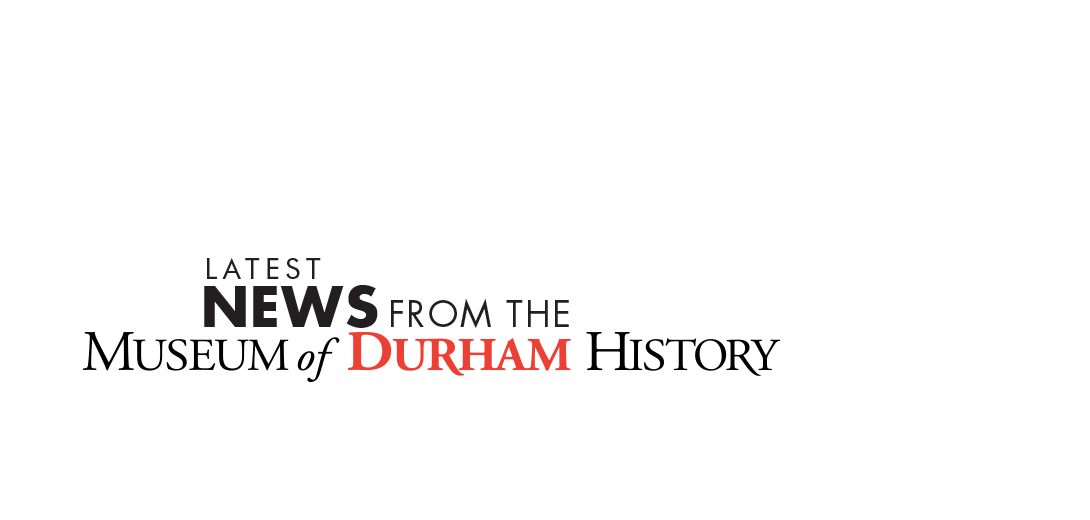History of Jewish Life in Durham
Posted on August 10, 2013The following article by Karin Shapiro, Associate Professor of the Practice, African and African American Studies, Duke University first appeared in the monthly column in the News and Observer and also in the Triangle Downtowner. The column features essays on Durham history by members of the MoDH’s History Advisory Committee.
Jewish faith and culture have been part of Durham’s history since its earliest beginnings, reflecting and contributing to the city’s wider economic and social transformations. With the development of the tobacco industry in the 1870s, Jewish merchants came to Durham to establish retail stores for recently arrived white and black tobacco workers. Many lived around Pine Street in the Hayti neighborhood; most located their businesses on Main Street. In 1881, the Duke Tobacco Company brought over 100 East European Jews to Durham to roll cigarettes. Their presence turned out to be short-lived, with the vast majority returning to New York following labor disputes and the mechanization of cigarette rolling. Despite Durham’s brief flirtation with a radical Jewish working class, Durham’s Jewish population expanded, attracted to the fast-growing city.
Durham’s Jews soon began to pray together and imagine a permanent community. In 1884, they bought land for a Jewish cemetery on Morehead Avenue and soon formally constituted themselves as the Durham Hebrew Congregation. From the late 1880s until 1905, they held services on the second floor of a Main Street shop. High Holiday services, which brought together a larger proportion of Jewish residents, took place at the downtown Academy of Music.
When a church on Queen Street vacated its building in 1905, the Hebrew Congregation purchased it to use as a permanent synagogue. In 1918, when the city bought the synagogue to extend Queen Street, the Congregation embarked on an ambitious building project, constructing a large orthodox synagogue near the current County Library. In 1921, the community adopted a new name, Beth El Congregation. Many members of the community relocated their homes to the Roxboro street area, forming a Jewish enclave around the synagogue. Until World War II, Durham’s Jewish merchants assumed lay leadership in the community. Religious leadership initially came from unordained orthodox reverends and later from orthodox rabbis, who, until the late 1930s, led services in Hebrew and gave sermons in Yiddish. Only in the late 1930s, did the congregation shift to English sermons.
The Ladies Aid Society played a central part in community life. Formed in the 1910s, it reached out to the broader Durham community, helped run the Hebrew School, and assisted Jews in financial difficulties, especially during the Great Depression. It also coordinated fundraising and relief efforts during World Wars I and II.
By the mid-1940s, members of Jewish community began to rethink both the location and the orthodox nature of the synagogue. A number of issues factored into their deliberations: the deterioration of the Roxboro neighborhood, as they perceived it; Durham’s incipient suburbanization; and Duke’s and UNC’s growing willingness to hire Jewish faculty who were not inclined toward orthodoxy. As these academic and professional newcomers arrived, many in the congregation judged that a more modern liturgy and a new synagogue close to Duke would attract professional newcomers. Despite significant internal tensions, the congregation shed its dominant orthodox ethos by the mid-50s, buying land on Watts Street in 1954 to build a contemporary designed “American” synagogue – the home of Beth El since 1957.
Like many Jewish communities across the U.S., Durham’s Jews in the post-World War II period would be more assimilated than their parents and grandparents, offering new challenges to their religious institutions. Over the most recent half-century, the community has created other Jewish congregations, including Judea Reform (1961), while Beth El has worked out a strategy for accommodating both its more modern bent and orthodox heritage. The city’s synagogues have tussled with the issue of interfaith marriages and expanded their community service and social action programs. By the 1970s, they had embraced women as ritual and lay leaders; more recently they have welcomed the LGBT community. Jewish Durham has clearly travelled some distance from its roots as a Yiddish-speaking community of orthodox immigrant merchants and artisans, adjusting to the rise of the knowledge economy and the currents of social change.
*Photo credit Beth El Synagogue, photo credit: Sidney David Markman


